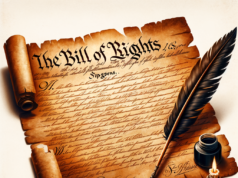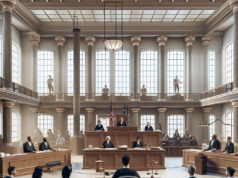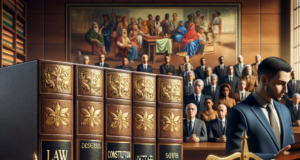Courtrooms are often depicted in movies and television as dramatic arenas where justice is served, but the reality is far more complex. The procedures that govern courtroom conduct are intricate and essential for ensuring fair trials. This article aims to unveil the secrets behind courtroom procedures that many may not be aware of, providing insights into the roles of various participants, the selection of jurors, the presentation of evidence, and the decorum expected during trials. Understanding these elements is crucial for anyone interested in the legal system, whether as a participant or an observer.
Understanding the Basics: An Overview of Courtroom Procedures and Their Importance
Courtroom procedures are a set of established rules and protocols that govern the conduct of legal proceedings. These procedures are designed to ensure fairness, maintain order, and uphold the rights of all parties involved. They encompass everything from the filing of documents to the presentation of evidence and the conduct of witnesses. The importance of these procedures cannot be overstated; they serve as the backbone of the judicial system, ensuring that justice is administered impartially and efficiently. By adhering to these protocols, courts can facilitate the resolution of disputes, protect the rights of defendants, and uphold the rule of law.
The Role of the Judge: Unraveling the Authority and Responsibilities in Court
The judge plays a pivotal role in the courtroom, acting as the arbiter of the law and ensuring that proceedings are conducted fairly and according to established legal standards. Judges possess the authority to make critical decisions, including the admissibility of evidence, the interpretation of laws, and the management of courtroom decorum. They are responsible for guiding the trial process, providing instructions to jurors, and ensuring that all parties have the opportunity to present their cases. Furthermore, judges must remain impartial, setting aside personal beliefs to uphold the law and protect the rights of both the prosecution and defense. Their decisions can significantly influence the outcome of a case, making their role one of immense responsibility.
Jury Selection: The Intricate Process Behind Choosing Impartial Jurors
Jury selection, or voir dire, is a critical phase in the trial process that involves selecting jurors who can impartially evaluate the evidence presented. This intricate process begins with a pool of potential jurors, from which a smaller group is chosen to serve on the jury. Attorneys for both sides have the opportunity to question these potential jurors to identify any biases or preconceived notions that may affect their judgment. The goal is to assemble a jury that can fairly assess the facts without prejudice. This process can be highly strategic, as attorneys may use peremptory challenges to dismiss certain jurors without providing a reason. The integrity of the jury is vital to the justice system, as a fair and impartial jury is essential for delivering just verdicts.
Evidence Presentation: Exploring the Rules and Techniques for Admissible Evidence
The presentation of evidence is a cornerstone of courtroom procedures, governed by strict rules that determine what can be introduced during a trial. Evidence must be relevant, material, and admissible under the law. This means that it must directly relate to the case and be obtained through lawful means. Both the prosecution and defense present their evidence through various forms, including witness testimony, documents, and physical exhibits. The judge plays a crucial role in evaluating the admissibility of evidence, often ruling on objections raised by attorneys. Techniques such as expert testimony and demonstrative evidence can enhance the persuasiveness of a case, but they must adhere to legal standards to be considered valid. Understanding these rules is essential for legal practitioners, as the effectiveness of a case often hinges on the quality and admissibility of the evidence presented.
Courtroom Decorum: The Unwritten Rules That Govern Behavior During Trials
Courtroom decorum refers to the expected behavior of all participants in a trial, including attorneys, witnesses, jurors, and spectators. Maintaining decorum is essential for preserving the dignity of the court and ensuring that proceedings run smoothly. Unwritten rules dictate that individuals should dress appropriately, speak respectfully, and refrain from disruptive behavior. Attorneys are expected to conduct themselves with professionalism, addressing the court and opposing counsel with courtesy. Witnesses must provide truthful testimony, while jurors are required to remain attentive and impartial. Violations of courtroom decorum can lead to contempt of court charges, which may result in penalties. By adhering to these unwritten rules, all participants contribute to a respectful and orderly judicial process.
Appeals and Reversals: How Legal Decisions Can Be Challenged in Higher Courts
The legal system provides mechanisms for challenging decisions made in lower courts through the appeals process. An appeal allows a party dissatisfied with a court’s ruling to seek a review by a higher court. This process typically involves submitting written briefs that outline the legal arguments for why the decision should be overturned or upheld. Appeals are not new trials; rather, they focus on whether legal errors occurred during the original proceedings that could have affected the outcome. Higher courts have the authority to affirm, reverse, or remand cases back to lower courts for further proceedings. Understanding the appeals process is crucial for legal practitioners, as it offers a pathway for correcting injustices and ensuring that the law is applied consistently.
In conclusion, courtroom procedures are a vital aspect of the legal system, ensuring that justice is served fairly and efficiently. From the roles of judges and jurors to the intricacies of evidence presentation and courtroom decorum, each element plays a crucial part in the trial process. By understanding these procedures, individuals can gain a deeper appreciation for the complexities of the legal system and the importance of upholding the rule of law. Whether you are a legal professional, a student of law, or simply an interested observer, recognizing the nuances of courtroom procedures can enhance your understanding of how justice is administered in society.


























